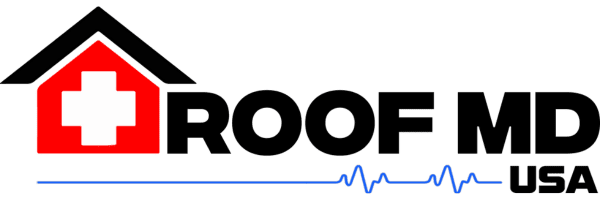Your home’s roof is its first line of defense against the elements, and shingles play a vital role in shielding your house. However, just like any other part of your home, shingles can wear out and may require attention. Recognizing early signs of shingle damage can help you address issues before they become bigger, more costly problems. In this blog, we’ll break down the key indicators of shingle damage so you can maintain a safe and secure home.
Why Regular Roof Inspections Are Important
Roof inspections might seem like a chore, but they are crucial in ensuring your home remains safe and secure. Regular inspections help catch minor issues before they escalate into significant problems. This can save you both time and money in the long run.
Moreover, regularly inspecting your roof can extend its lifespan. By identifying and addressing minor wear and tear before they turn into major issues, you ensure that your shingles remain in good condition for as long as possible. In regions like Minnesota and Wisconsin, where harsh weather conditions can take a toll on your roof, frequent inspections are even more critical.
Furthermore, routine inspections can support your insurance claims. In the event of significant damage resulting from a storm or other unforeseen circumstances, having documented evidence of regular maintenance can strengthen your case when dealing with insurance companies. This proactive approach not only helps in maintaining the integrity of your home but also in securing financial assistance when needed.
Common Causes of Shingle Damage
Understanding what causes shingle damage can help you prevent it. Common culprits include severe weather conditions like heavy rain, hail, and wind, as well as poor installation and aging materials. Knowing these causes can help you take preventative measures.
Severe weather is one of the most significant contributors to shingle damage. High winds can lift or tear shingles away from the roof, exposing the underlayment. Hail can cause direct impact damage, such as dents or cracks. Additionally, consistent heavy rain can wear down shingle materials over time, reducing their effectiveness and lifespan.
Beyond weather, poor installation practices can lead to premature shingle failure. If shingles are not properly secured or if the wrong type of shingle is used for the local climate, it can result in early wear and tear. Older homes may also suffer from the natural aging process of shingles, which can become brittle and less effective after many years in service.
Visual Signs of Shingle Damage
One of the easiest ways to spot damage is through a visual inspection. Look for cracked, curled, or missing shingles, granule loss, and dark patches. These visual cues can indicate that your shingles are reaching the end of their lifespan.
Cracked shingles can result from aging or from high wind impact. This type of damage can allow water to seep through, leading to leaks and further structural damage. Curled shingles are often a sign of extreme temperature fluctuations, which cause the edges to lift and can leave your roof vulnerable to moisture infiltration.
Granule loss is another significant visual indicator. As shingles age or take damage from severe weather, they begin to shed their granules, which are key to protecting the shingles from UV rays and weathering. If you notice piles of granules in your gutters or around your house, it is a sign your shingles may need replacement soon.
Dark patches on your roof can indicate mold or algae growth, which thrives in moist environments. Although it’s not always a sign of shingle failure, the presence of algae or mold can accelerate the deterioration process. Cleaning the roof periodically can prevent these organisms from causing further damage.
Structural Indicators of Shingle Damage
Sometimes, shingle damage isn’t immediately visible. Structural indicators such as leaks in the attic, water stains on ceilings or walls, and increased energy bills due to poor insulation can all signal underlying shingle issues.
Leaks are perhaps the most obvious structural sign of shingle damage. While they often manifest as dripping water during or after rain, leaks can also present as stains on your ceilings or walls. These stains occur when moisture seeps through the roof’s layers and into your home’s interior, causing discoloration and, eventually, structural damage.
Another less visible but equally important indicator is your energy bill. A sudden spike in your heating or cooling costs may suggest that your roof’s insulation has been compromised. Damaged or missing shingles can allow air to escape your home, forcing your HVAC system to work harder to maintain a comfortable indoor temperature.
When to Call a Professional
If you’re uncertain about the condition of your shingles or if you notice any signs of damage, it’s wise to call a professional. They can provide a thorough inspection and recommend the best course of action to ensure your roof remains in excellent condition.
Professionals have the expertise and the tools needed to identify both superficial and underlying issues that might not be immediately apparent to a layperson. They can diagnose problems accurately and offer solutions that are both effective and cost-efficient.
For residents in extreme weather regions, calling a professional is even more crucial. In areas like Minnesota and Wisconsin, for instance, roofs face distinctive challenges due to drastic seasonal changes. High winds, heavy snow, and hail storms can all contribute to severe roofing issues that necessitate expert analysis and repair. You can learn more about spotting issues and solutions for roof damage in extreme weather regions here.
Stay Vigilant and Protect Your Home
Regularly inspecting your shingles and being aware of the early signs of damage can save you a lot of trouble and expense in the long run. Remember, a healthy roof means a healthy home. Don’t hesitate to call in a professional if you notice any of these signs or if you are unsure about the condition of your shingles. Being proactive will ensure your home remains protected and your peace of mind intact.

